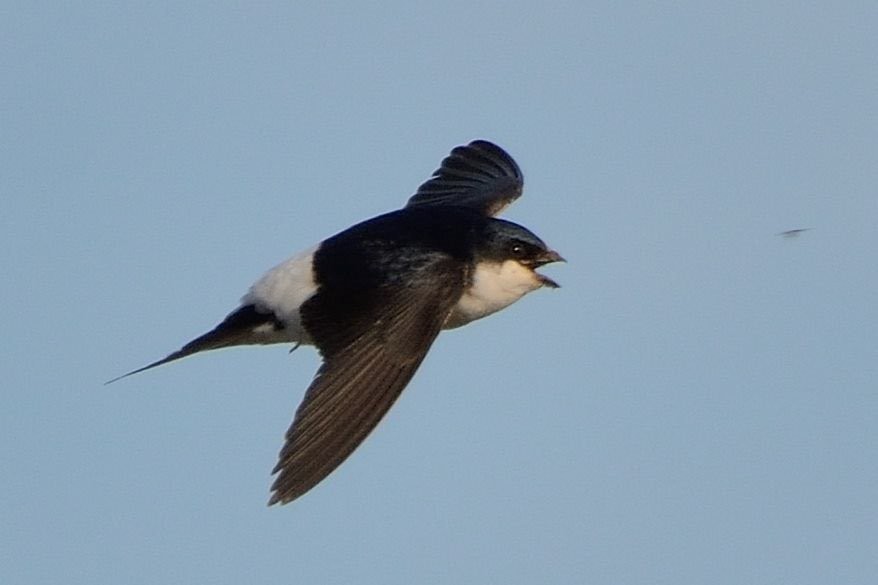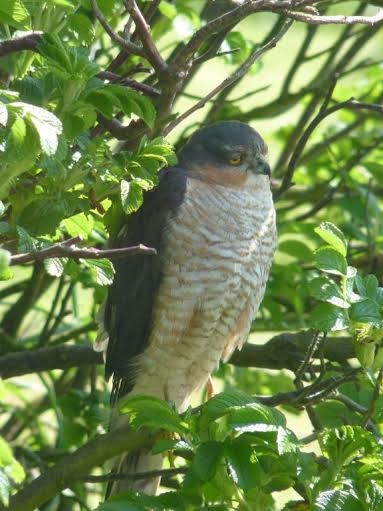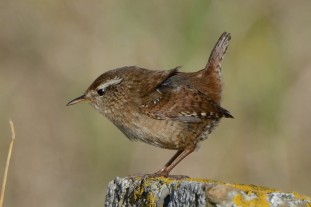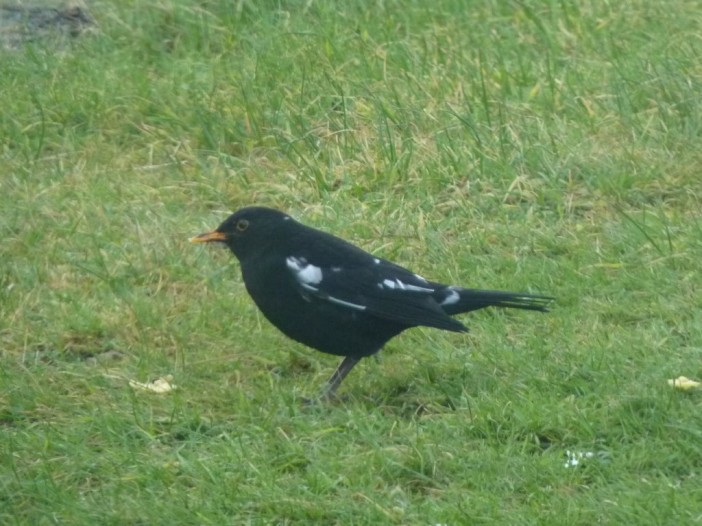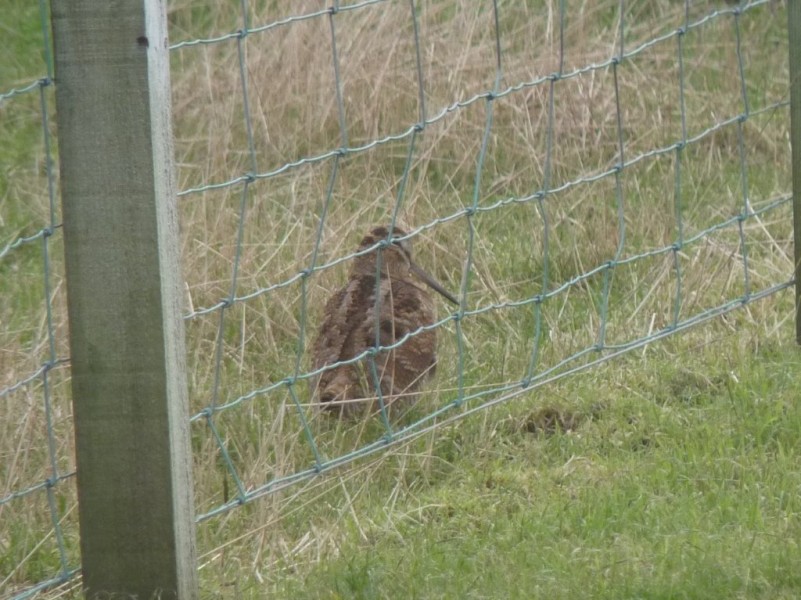Bird Report - May 2016
Our feeding of the birds in the back garden here at Sunnybank has resulted in some extra visitors
this month with Herring Gull, Black-headed Gull and Hooded Crow paying visits. I know these are not
the most popular birds but, when seen at close quarters, they are all very striking - I just hope they
won't bring all their second cousins along also! The Collared Doves seem a fixture with us now, two
or three regularly visiting. The Wren nest in the byre is occupied so I am trying to keep a low profile
until the eggs are hatched.
I spotted two bedraggled birds on the fence at the front of the house on the 17th and these turned
out to be Linnets. We had another Linnet on the 20th, this one looking a lot bonnier. Also on the
20th I heard a Cuckoo calling from the Halley Road area, although this must have been on the move
as all was quiet soon after.
My monthly beached birds visit to Newark Bay produced 6 Black-headed Gulls riding the waves
while one Black Guillemot (Tystie) was swimming at sea. A nice mixed flock of waders was on the
shore at the water's edge - Ringed Plovers, Dunlin (with their black front) and Sanderling wheeling
about.
Moving on to Sandside Bay a Skylark's song accompanied my walk down to the beach; a Pied
Wagtail was on a post so possibly a nest nearby. On the beach 40 Oystercatchers were chilling out -
this must be a place of recreation for them as there was a big flock here last month also.
I saw and heard a pair of Ringed Plovers calling on one of the Deerness beaches which made me
think there would be a nest nearby.
On May 22nd I was at Nancy Scott's house watching House Martins building nests there - lovely to
see. These birds nested here last year also so it seems to be an established site now. Here is a
splendid photo of one of the birds on the wing - this was taken by Ian Cunningham.
Jonathan and Kathryn Southerington of the Rocket Hoose at Dingieshowe reported two Red-backed
Shrikes which stayed for just a short while but nice birds to see.
On May 28th I was surprised to see a male Sparrowhawk sat in the rosa rugosa bush, obviously
contemplating his next move. He sat there long enough for Peter to pass me the camera so here is a
picture of the bird just before he flew off into another bush hoping for rich pickings!
(Photo by Pauline Wilson).
Several bird-spotters include Deerness on their rounds and on May 11th a Bluethroat was reported
in a garden in the parish but no actual location was given - this is one of the "to see" birds on my list
so I would have loved to catch sight of it.
Ian Cunningham regularly visits Deerness (with his fabulous camera). He reported aSnipe drumming
over East Denwick, a Short-eared Owl near Dingieshowe and 2 House Martins by a farm just west of
Lighthouse Corner (these were Nancy's of course). Two Wheatears each at Sandside Bay, Lighthouse
Corner and East Denwick; two Red-throated Divers were at Newark Bay ; Lastly, Ian watched a Swift
flying around Grindegar Farm, Deerness.
This is a lovely time of year for birds and for wild flowers so I expect many of us will be out and
about more so don't forget the binoculars!
Pauline Wilson
Bird Report - March 2016
I was driving along the road past St. Peter's Pool early in the month when I saw a female Hen Harrier flying alongside the car and couldn't help but notice a red wing tag. On enquiring about this I found out that the bird is now an old lady of about 12 years.
The next day I took a walk down the track from Hacco to the shore and heard several Skylarks singing away. (There are lots of Skylarks to be heard in the parish just now as they soar high in the sky full of the joys of spring). In the field to the right I counted 300 Pink-footed Geese then saw a Hare ambling across the grass.
Taking a run on the 18th, Daisy Aitken and I counted 40 Fieldfare in the field below Watermoss. These birds will now be on their way to breeding grounds.
Once again a Short-eared Owl has been seen hunting in Little Halley's field - certainly a favourite spot for this popular raptor which seems to be doing well in Orkney just now.
Returning up the track to Hacco on March 31st it was nice to see a flock of Curlews feeding in the field across the road from South Windbreck. Further down a male Pheasant gave out his unmistakeable sound.
March 28th was a lovely day for my beached birds survey at Sandside Bay. On the shore a small group of Ringed Plovers and a single Redshank were searching for food at the water's edge. Three Rock Doves took off and a pair of Mallards flew overhead. I heard a Meadow Pipit calling then shortly afterwards another was giving a fine courtship display as he flew high in the air then fluttered down to earth.
Keen bird-watcher Gerry Cannon did a sweep of the parish on March 10th and reports the following:
Lighthouse Quarry; Greenfinches and Blackbirds; he then went to Mull Head and along the cliffs, round to Skaill and back to Lighthouse Corner reporting the birds he saw along the way: 8 singing Skylarks, 25 Twite, 60+Oystercatchers, 500+Fulmars on cliffs, 100 Guillemots, 15+Razorbills, 1 Great Northern Diver (far out), heard Pinkfooted Geese, 1 Sparrowhawk at the Gloup.
Also at the Gloup, Ian Cunningham had camera to hand when he saw a Wren and managed to take this charming photo of the tiny bird.
Photo - Ian Cunningham
February 2016 Bird Report
[Many apologies for the late arrival of Pauline's report - gremlins in the IT system, now finally sorted - Editor]
February started off with a fine view of a male Hen Harrier hunting in our back garden at Sunnybank. It's lovely to see the male of the species with its light grey plumage topped off with black wing tips.
Also on February 1st I was pleased to see we still had the leucistic Blackbird coming to apples on the back lawn. However, this disappeared a few days later, probably getting a bit farther on its travels.
I took a ride out to the Gloup car park on February 13th, noting birds along the way. As I passed Deerness Stores I counted approximately 300 Greylag Geese. Reaching the the Sandside area more geese were grazing in the field opposite, this time including Pinkfooteds among their number. Three Lapwings were to be seen in the field adjacent to the Gloup. It won't be long before these birds are pairing up for the breeding season if, in fact, they have not already done so. Looking to the other side of the road a smallish mixed flock included Golden Plovers and more Lapwings. Setting off back for home it was lovely to see a mixed group of birds. Upon closer inspection I counted no less than five different wader species: Oystercatchers, Lapwing, Turnstone, Redshank, Golden Plovers. As well as the waders there were at least 6 Skylarks although no singing to be heard as yet (although I know skylarks have already been heard this year). Not to be left out, a flock of Starlings was also in evidence. As I progressed down the road I spotted yet more Golden Plovers.
Snow arrived on St. Valentine's Day so, besides the usual apples and seed I normally put out for the birds, I added porridge oats and sultanas which they love. Dried mealworms are a favourite also. Besides our usual gang, this morning I was pleased to see a Robin in the back garden.
February 21st brought 80 Rooks into our front field; these are easily distinguished from other corvids by their grey beak area.
A Wren continues to delight us - it was flitting around in the Rose Rugosa bush on the 26th. I wonder if we will have breeding wrens again this year? Last year they nested in the goat house and it was almost impossible to spot the nest until they were almost fledged.
A Short-eared Owl is often to be seen in the field at Little Halley so the vole population there must be fairly abundant. I had a good sighting of it on the 26th.
I did beached birds surveys on February 27th, firstly at Newark Bay when I was surprised to see a Cuttlefish bone washed up on the shore. Nice to see Oystercatchers back - five were on the shore along with 2 Rock Pipits, 4 Ringed Plovers and 1 Turnstone.
Turning my attention to Sandside Bay there were at least 200 Pinkfooted Geese in the field below Creya. Out at sea a Red-breased Merganser female was swimming along as were 2 Long-tailed Ducks.
It was a higher-than-normal count of seabirds washed up on the shore, particularly at Newark, so the recent heavy seas have taken their toll.
Spring is just around the corner so I look forward to the chance for more birdwatching as the days lengthen.
Pauline Wilson


